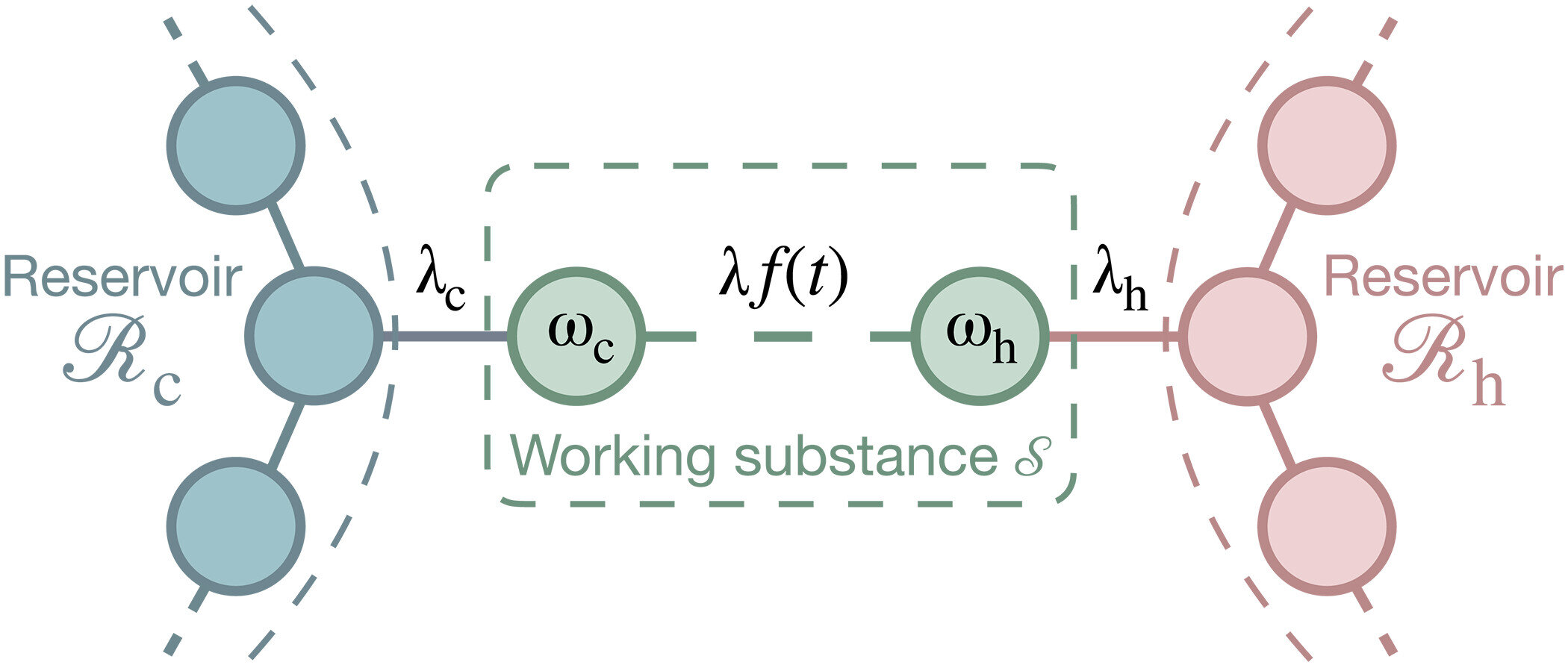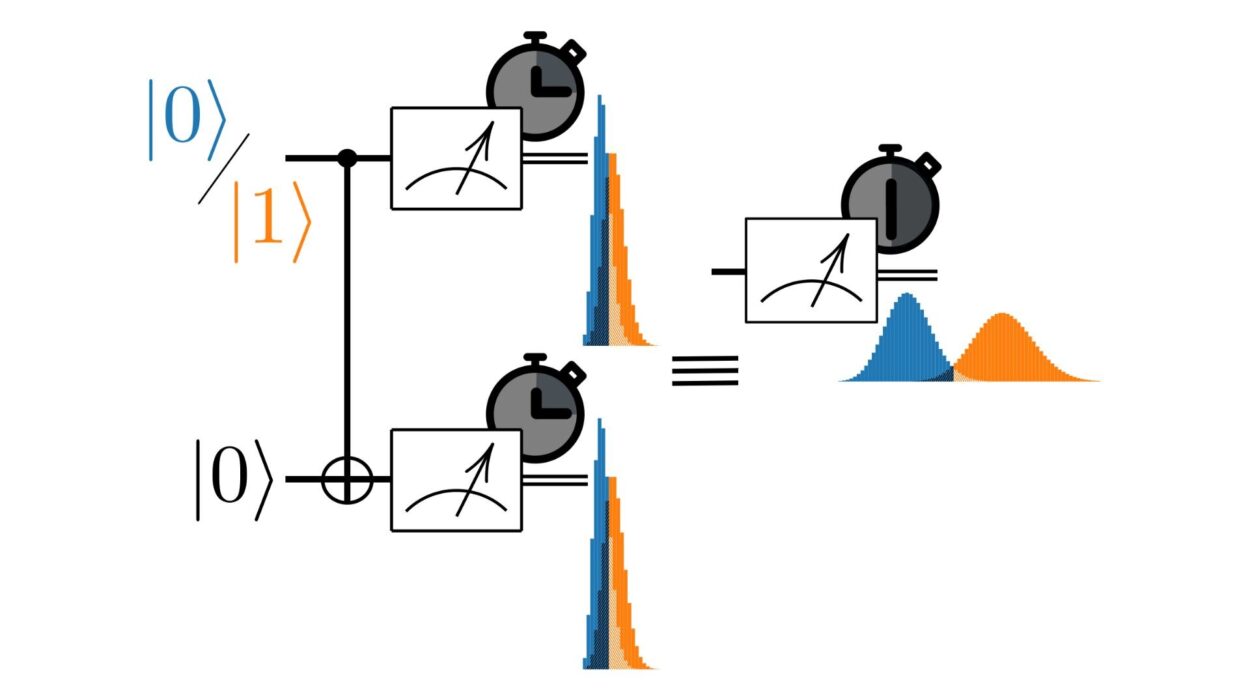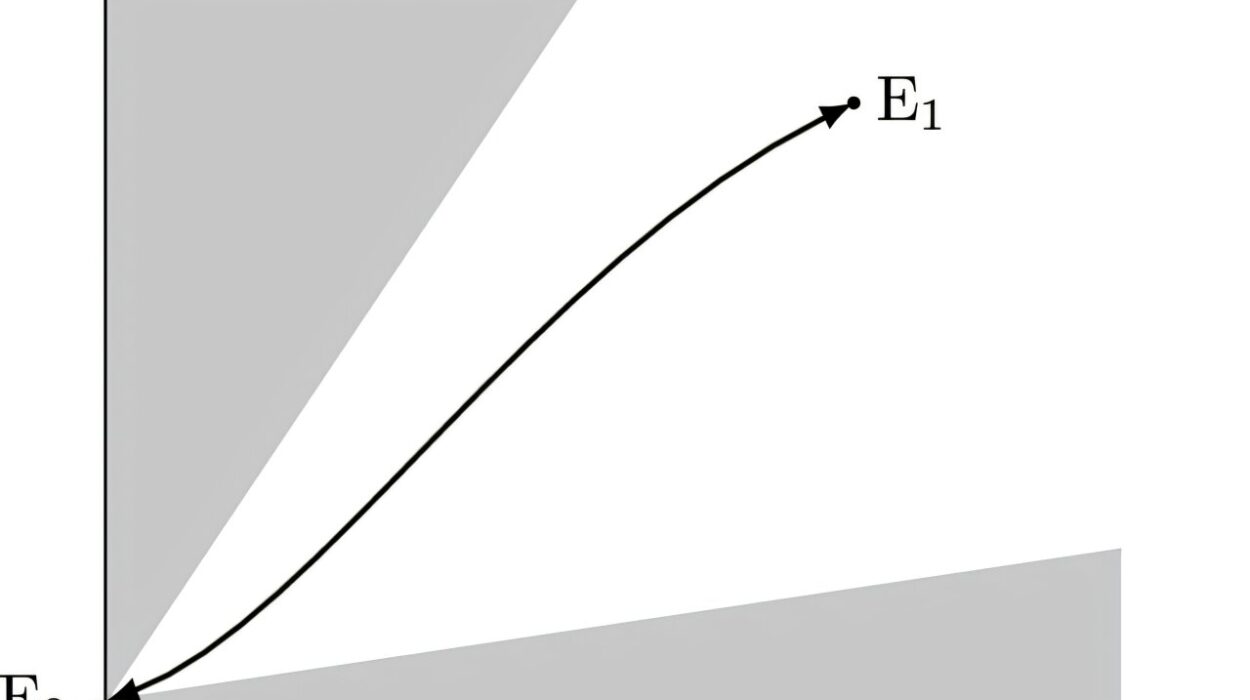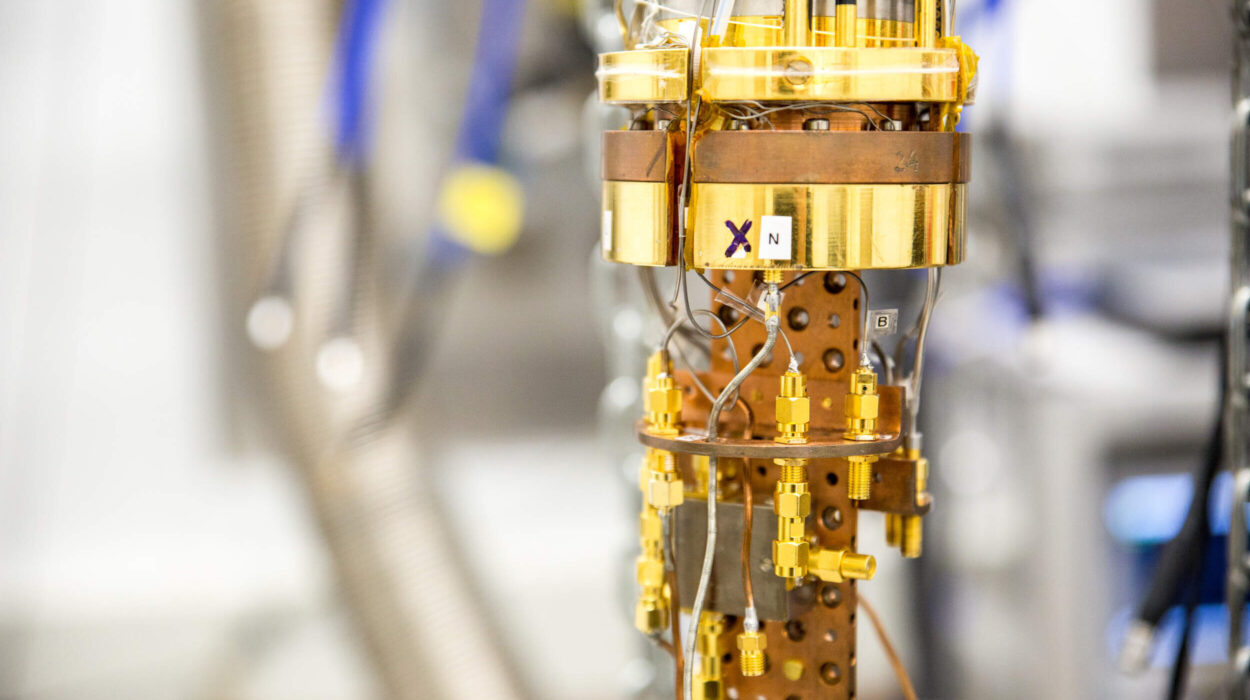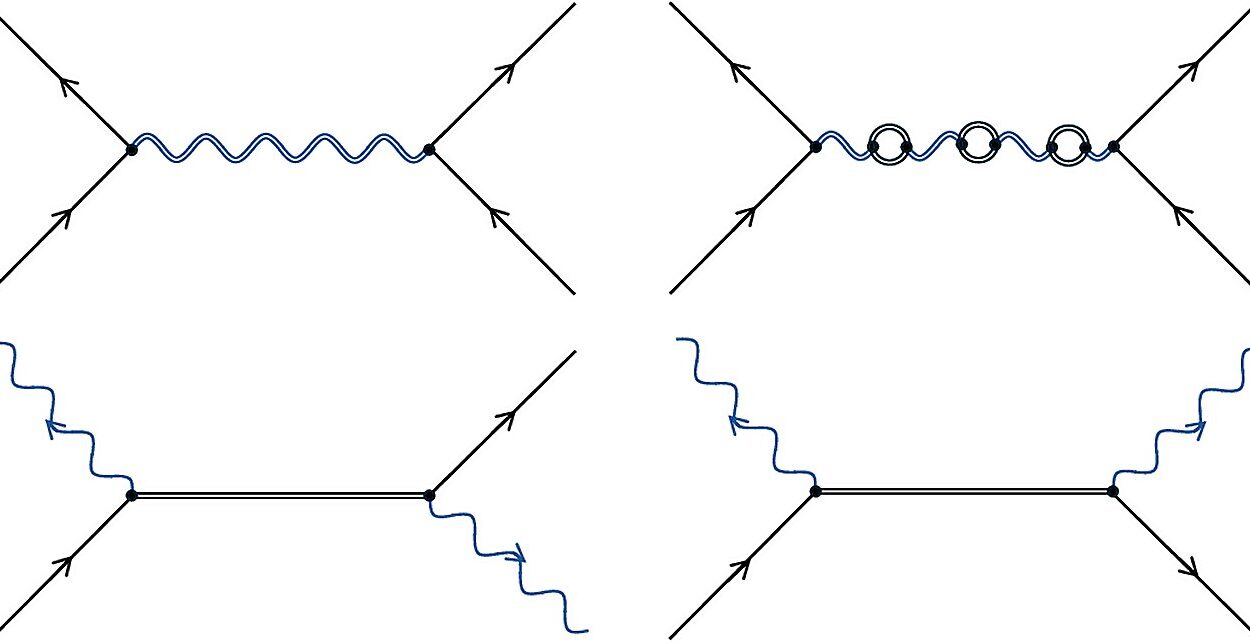For nearly two centuries, the Carnot principle has stood as one of the cornerstones of physics—a law so fundamental that it defines the upper limit of efficiency for any heat engine. From the roaring furnaces of industrial steam engines to the smooth hum of car motors, everything that converts heat into work has been bound by this rule. But now, in a breakthrough that could reshape the future of energy and technology, two physicists from the University of Stuttgart have shown that this age-old limit does not hold true on the atomic scale.
Professor Eric Lutz and Dr. Milton Aguilar from the Institute for Theoretical Physics I have proven that the Carnot principle, while powerful for large systems, must be extended when applied to the strange and interconnected world of atoms. Their findings, published in Science Advances, open a new chapter in thermodynamics—one where the rules of heat and energy bend under the influence of quantum physics.
When the Quantum World Defies Classical Logic
To grasp the magnitude of this discovery, it helps to remember what the Carnot principle actually says. In the early 19th century, the French physicist Sadi Carnot discovered that the efficiency of any heat engine depends solely on the temperature difference between its hot and cold reservoirs. No machine, he declared, could ever be more efficient than this theoretical “Carnot limit.” His insight gave birth to the second law of thermodynamics—the rule that defines the flow of energy in our universe.
For generations, this principle was treated as absolute. It governs the performance of steam turbines, combustion engines, and even power plants. But as science has plunged deeper into the quantum realm, physicists have begun to ask: do these classical laws still hold when we’re talking not about pistons and boilers, but about individual atoms and molecules?
The answer from Lutz and Aguilar is both revolutionary and elegant. When objects exist on the atomic scale, their particles often become correlated—entangled in ways that link their behaviors beyond classical expectations. These quantum correlations, it turns out, can fundamentally alter how energy and information are exchanged.
Redefining Efficiency: When Correlations Become Energy
In their paper, the Stuttgart team derived new, generalized laws of thermodynamics that include the role of quantum correlations. Their results reveal that microscopic heat engines—systems that operate on just a few particles—can draw not only on temperature differences but also on these subtle quantum relationships to do work.
In simple terms, quantum machines can turn correlations into energy. This means they could, in theory, produce more work than a classical Carnot engine operating under the same conditions.
“It is now evident that these engines can achieve a higher maximum efficiency than larger heat engines,” explains Professor Lutz. “The Carnot principle remains valid in its domain, but at the quantum level, the story is richer and more fascinating. Correlations become a new kind of fuel.”
This idea is more than a mathematical curiosity—it suggests that the universe hides untapped sources of efficiency, accessible only when we peer into the atomic fabric of reality.
The Rise of the Quantum Engine
For years, physicists have dreamed of creating “quantum engines”—devices so small that they could be powered by the movement of single atoms or photons. In laboratory experiments, researchers have already managed to build prototypes of heat engines that fit within microscopic scales. These miniature systems behave like their larger counterparts but obey the peculiar laws of quantum mechanics, where probabilities replace certainties and particles can exist in multiple states at once.
The new work from Stuttgart pushes this idea forward dramatically. By incorporating correlations, quantum engines could one day achieve energy conversions previously thought impossible. This isn’t about breaking the laws of physics—it’s about expanding them to include the hidden nuances of the quantum world.
Imagine engines that run not just on heat, but on information. In a way, that’s what these new thermodynamic rules imply. At the smallest scales, energy and information intertwine, and the boundaries between them blur. Quantum correlations, once thought of as abstract concepts, become physical resources that can be harnessed for real work.
A New Frontier for Nanotechnology
The implications of this discovery stretch far beyond the laboratory. If quantum engines can indeed surpass classical efficiency limits, they could revolutionize the design of nanoscale machines—devices so tiny they operate at the level of individual atoms and molecules.
Professor Lutz envisions a future where “tiny motors, no larger than a single atom, could become a reality.” Such engines could drive medical nanobots through the bloodstream, deliver drugs precisely to diseased cells, or manipulate materials with atomic precision. In the industrial world, they might power ultra-efficient processors, sensors, or energy converters that operate with minimal waste.
Dr. Aguilar adds that understanding how correlations influence energy flow deepens our grasp of nature itself. “Our work shows that the second law of thermodynamics—long considered universal—needs refinement when we enter the quantum domain,” he explains. “The universe is consistent, but it’s also more subtle and complex than our macroscopic experience suggests.”
The Beauty of a Deeper Law
What makes this discovery so remarkable is not just its technological potential, but its philosophical depth. Thermodynamics has always been the science of limits—the study of what can and cannot be done with energy. It governs the engines that power civilization, but also the entropy that drives the arrow of time.
Now, by showing that these limits shift when viewed through a quantum lens, Lutz and Aguilar remind us that physics is a living science. Even its most “immutable” laws can evolve when we look closer. The Carnot principle is not broken; it is transcended, refined by the very same curiosity that led Carnot himself to question the nature of efficiency two centuries ago.
In the quantum world, the old boundaries between heat, work, and information dissolve into something new—a universe where entanglement and correlation become as real as temperature and pressure.
Toward a Future of Quantum Power
As the field of quantum thermodynamics continues to grow, discoveries like this one will help shape the next generation of technology. Quantum computers already exploit the bizarre properties of entanglement to perform calculations far beyond the reach of classical machines. Quantum communication networks promise unbreakable encryption. And now, with the idea of quantum engines gaining ground, we may be on the brink of an energy revolution as well.
It’s a vision that merges the theoretical with the practical—a world where the smallest particles help us achieve the greatest efficiencies.
Still, much work remains. Building a functional quantum engine is an enormous challenge, requiring exquisite control over temperature, coherence, and environmental noise. But the path is clearer now, guided by new laws that better describe how energy truly behaves at the atomic scale.
The Endless Curiosity of Science
In the end, what stands out most about this discovery is not only what it changes, but what it represents: the unending human drive to understand. Science advances when we dare to question even its most sacred truths. The Carnot limit was once an unshakable pillar of physics; today, it has become a stepping stone to a deeper truth.
By looking beyond the macroscopic world into the quantum depths, Lutz and Aguilar have shown that life’s smallest systems can defy our biggest assumptions. They’ve reminded us that nature still holds surprises—astonishing, beautiful, and profoundly humbling ones.
In the tiniest engines of the quantum world, we find not only the promise of future technologies but also a reflection of the same spark that fuels every scientific discovery: a relentless curiosity about how the universe truly works.
More information: Milton Aguilar et al, Correlated quantum machines beyond the standard second law, Science Advances (2025). DOI: 10.1126/sciadv.adw8462
